Salmon again? It’s not the only healthy seafood
Casting your net wider than when you visit the fish market won’t just replenish jeopardised stocks, it may protect you from several illnesses.

Since the premiere in March of Seaspiracy, the controversial documentary on Netflix about the environmental impact of the fishing industry, there has been much debate about the sustainability of marine life in our oceans, particularly that of the big five that make up 80 per cent of the seafood consumed in the UK: cod, haddock, tuna, salmon and prawns.
Most of these five are imported, contributing to global carbon emissions, and there is a concerted push by Love Seafood, the consumer arm of the UK fish industry, supported by the government and by healthy-eating experts, to raise awareness of the options caught around the UK that we could eat without causing as much harm to the aquatic ecosystem.

“In terms of both nutrition and the environment, it is variety of seafood that is important,” says Juliette Kellow, a dietitian and spokeswoman for the British Dietetic Association. “There are so many species of fish and shellfish from UK waters which are traditionally exported but which we would benefit from including in our diet more often.”
From hake and plaice to herring and langoustine, different fish species offer unique health benefits due to the nutrients they contain and deliver protein in amounts comparable to meat. For example, 100g of grilled herring contains 23g of protein, while a 100g grilled lamb chop contains 29.2g.
With their high content of the long-chain omega-3 fatty acids eicosapentaenoic acid (EPA) and docosahexaenoic acid (DHA), fatty fish have anti-inflammatory properties and regular consumption may help to lower LDL cholesterol (the bad sort) and triglycerides - more so than popping a fish oil supplement.
At the American College of Cardiology 2021 scientific session this month, researchers from the Intermountain Healthcare Heart Institute in Salt Lake City reported that omega-3 supplements may do more harm than good, with the study author Viet Le, a cardiovascular physician, reporting that a high level of DHA “blunts the benefit of EPA” when combined in a fish oil pill. Based on his and other findings, Le says a healthier option is to consume omega-3 rich foods such as oily fish.

Before the pandemic our fish-eating habits were far from impressive. Data from the Department for Environment, Food and Rural Affairs warned that consumption had been slowly declining since 2007 and was projected to hit a record low by 2040. It doesn’t help that we aren’t very fish-aware, says Stefano Mariani, a professor of marine biodiversity at Liverpool John Moores University. For a recent study, he asked 720 people from six European countries to identify six common commercial fish species from photographs.
“Respondents from the UK fared the worst, recognising only one of the six fish species on average,” Mariani says. “Most participants struggled to identify even cod and salmon, some throwing in wild guesses that they were goldfish or shark.”
Yet the downward trend appears to have been bucked somewhat with Seafish, the public body supporting the UK seafood industry, reporting an 11 per cent rise in fish sales in 2020 as we all dined at home over the past year.

Most supermarkets have done away with fresh fish counters and 95 per cent of seafood sold in the UK is packaged, but at those where fresh fish is sold there are more encouraging signs. At Waitrose fresh fish sales tripled during the six months to October 2020.
Most of us would still benefit from eating more. Recommendations from Public Health England (PHE) are that we consume two 140g portions of fish a week, one of those oily fish, but with an average weekly intake of only 54g we fall well short. Grabbing sushi or a crayfish sandwich from Pret a Manger a couple of times a week is unlikely to make much of a difference.
“The recommended 140g portion size is equivalent to a decent fillet of fish,” Kellow says. “A lot of people say they eat fish regularly, but very few have a good enough serving size.”
And neither fresh nor canned tuna counts towards your oily fish intake. “A couple of years ago PHE reviewed its guidance and removed tuna from the list of fish recommended for its beneficial omega-3 content,” Kellow says. “Tuna is good, but doesn’t contain as many omega-3 fats as other species.”
So what else should you try?
-
1. Sardines to reduce type 2 diabetes
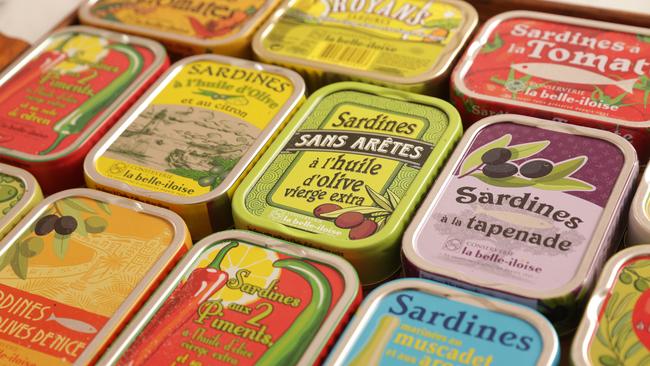
Rich in omega-3 fatty acids, sardines also contain nutrients such as taurine, calcium and vitamin D that, in combination, may help in the fight against type 2 diabetes. A Spanish study published this month showed that two weekly servings of sardines, which can be caught off the Cornish coast, may help to protect against the condition.
Diana Diaz Rizzolo, a lecturer and researcher at the Universitat Oberta de Catalunya’s Faculty of Health Sciences, asked patients at risk of type 2 diabetes to follow a healthy diet with some adding 200g of sardines every week (in this case two cans of sardines in olive oil). Of the group that included sardines in their diet, 37 per cent had been labelled at very high risk of suffering from diabetes at the start of the study, but a year later only 8 per cent remained in that category of risk. Among the non-sardine eaters, 22 per cent remained at very high risk of the condition by the end of the trial, a drop of only five points since it began.
“Not only are sardines reasonably priced and easy to find, but they are safe and help to prevent the onset of type 2 diabetes. This is a huge scientific discovery. It is easy to recommend this food during medical check-ups and it is widely accepted by the population,” Rizzolo says.
-
2. Herring for vitamins and healthy omega-3
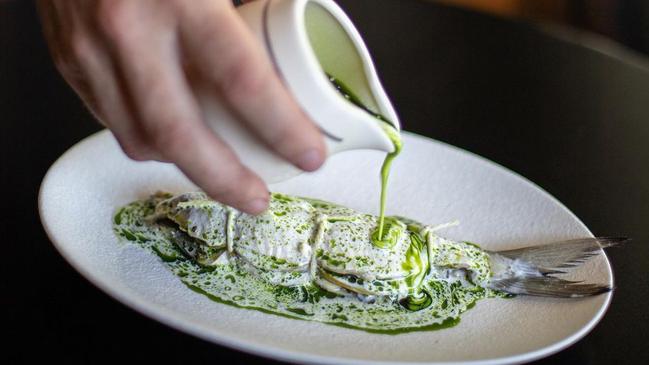
Atlantic herring is “among the best food sources of vitamin D along with the vitamins B12 and B6, both important for healthy red blood cell function,” Kellow says. “Herrings are a bit like a large sardine.”
The fish also provide plenty of omega-3 fatty acids, with a 2019 study by the Norwegian Institute of Food, Fisheries and Aquaculture Research finding that the species has a naturally high content of cetoleic acid, a fatty acid that stimulates cells to convert short omega-3 fatty acids into the healthy longer omega-3 fats.
They are often pickled as rollmops or salted, rinsed, dried and smoked to make kippers, but it’s best to grill or bake them whole from fresh. With a 4.3 per cent omega-3 content (compared with 1.5 per cent in salmon), a 50g serving of herring meets the recommended weekly requirement of omega-3 fatty acids.
Researchers at the Queen Mary University of London recently showed that a higher intake of fatty fish including herring in childhood may reduce the risk of asthma among children carrying a common gene variant.
-
3. Mussels as an alternative to fish oil supplements

Rope-cultured mussels – the molluscs are grown on ropes suspended in the water that don’t touch the seabed, ensuring they don’t pick up grit and barnacles – are among the most sustainable choices and Kellow says they contain nearly five times the amount of vitamin B12 as beef and over eight times more iron than chicken.
One study at the University of Stirling Institute of Aquaculture showed blood samples taken from people asked to eat mussels three times a week for 14 days “significantly improved” their omega-3 status while providing many of the nutrients in meat.
According to Dr Stefano Carboni, who led the research, it means mussels are a viable “food first” alternative to omega-3 supplements, with the added benefit that the greenhouse gas emissions per edible kilogram of farmed mussels are a fraction of that from producing pork, beef or chicken.
“Harvesting rope-cultured mussels does not impact the marine biodiversity in the same way as commercial scale fishing and they are a highly nutritious, omega-3 containing protein source,” he says.
-
4. Crab for fertility boost
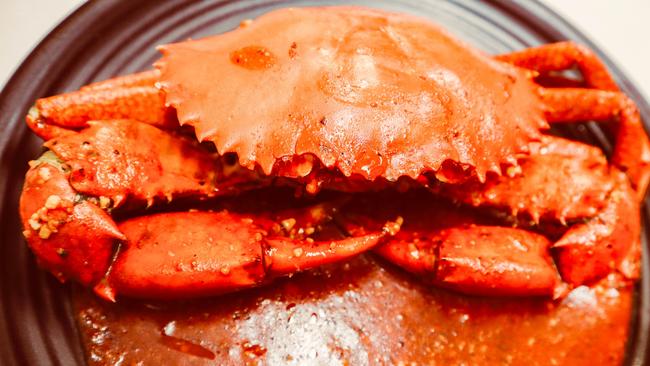
Crabmeat is an excellent source of protein, rich in zinc and important for male fertility, and contains 12 times the selenium, a nutrient with a key role in the body’s antioxidant defences and protection of cells, found in beef.
Concerns that crabmeat might contain the heavy metal cadmium, toxic to humans, was addressed in a 2019 study conducted by Dr Alan Sneddon, a researcher in metabolic health at the Rowett Institute of the University of Aberdeen. Sneddon compared body cadmium levels of healthy, middle-aged, habitual crabmeat consumers with those of a similar group who consumed very little crabmeat. Results showed the crabmeat eaters displayed no greater markers for long-term cadmium exposure or cadmium-induced kidney toxicity than people who did not eat crabmeat, suggesting it poses “a lower risk to consumer health than previously thought”.
Other researchers have suggested that the nutrients in crabmeat, including selenium and zinc, may counter the toxicity of cadmium.
-
5. Mackerel for heart protection

A recent review in the journal JAMA Internal Medicine found that for people with heart disease, eating oily fish such as mackerel twice a week may be a lifesaver.
Andrew Mente, an associate professor of health research methods, evidence and impact at McMaster University in Hamilton, Canada, collected data on 192,000 people from five continents, including about 52,000 who had cardiovascular disease. He found the omega-3 fatty acids in mackerel and other oily fish to be associated with a 17 per cent lower risk of heart attacks and strokes in the people with heart disease.
“Eating at least two servings of fish each week appears to lower your risk of future cardiovascular events and death if you have pre-existing cardiovascular disease,” Mente says. “If you’re generally healthy, there’s no clear protection, although fish is probably a safe choice for them as well.”
-
6. Langoustine and scampi for iodine
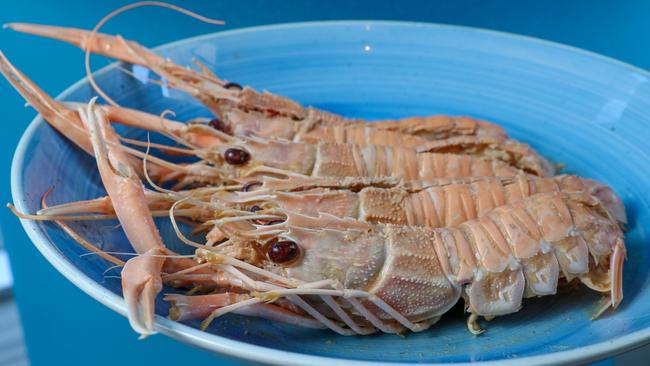
The British Thyroid Association predicted an epidemic of iodine deficiency after surveys suggested that more than two thirds of teenage girls were deficient in it.
Iodine is important for pregnant and breastfeeding women as large amounts are concentrated into the mother’s milk for the benefit of the developing child. A 100g serving of langoustine provides almost all of the daily iodine requirement for men (99.3 per cent) and women (93.3 per cent) as well as phosphorus, selenium and copper.
They also contain twice as much vitamin E as cod and three times as much vitamin B12 as prawns,” Kellow says.
Langoustine tails are commonly used to make scampi.
-
7. Squid for an energy boost
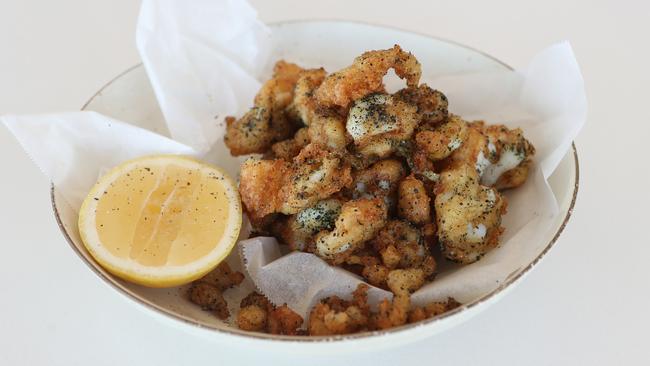
Eating squid does not raise blood cholesterol, Kellow says.
“In fact, it is beneficial for heart health and 100g of squid provides 21 per cent of your recommended weekly intake of heart-healthy omega-3 fatty acids,” she says.
“It contains nearly twice the amount of vitamin B6, important for immune function and offsetting fatigue, as chicken and nearly four times more than cod.”
THE TIMES

To join the conversation, please log in. Don't have an account? Register
Join the conversation, you are commenting as Logout